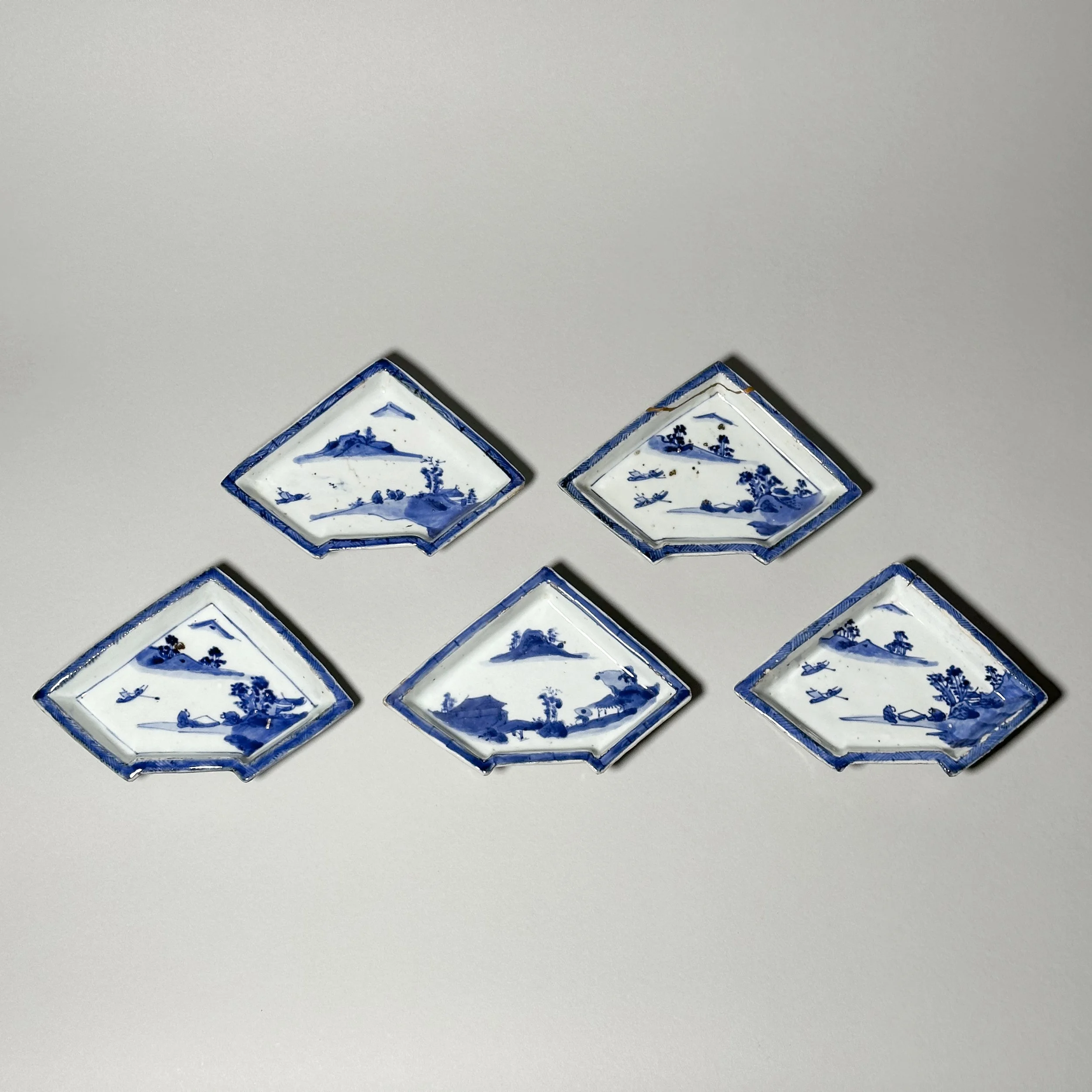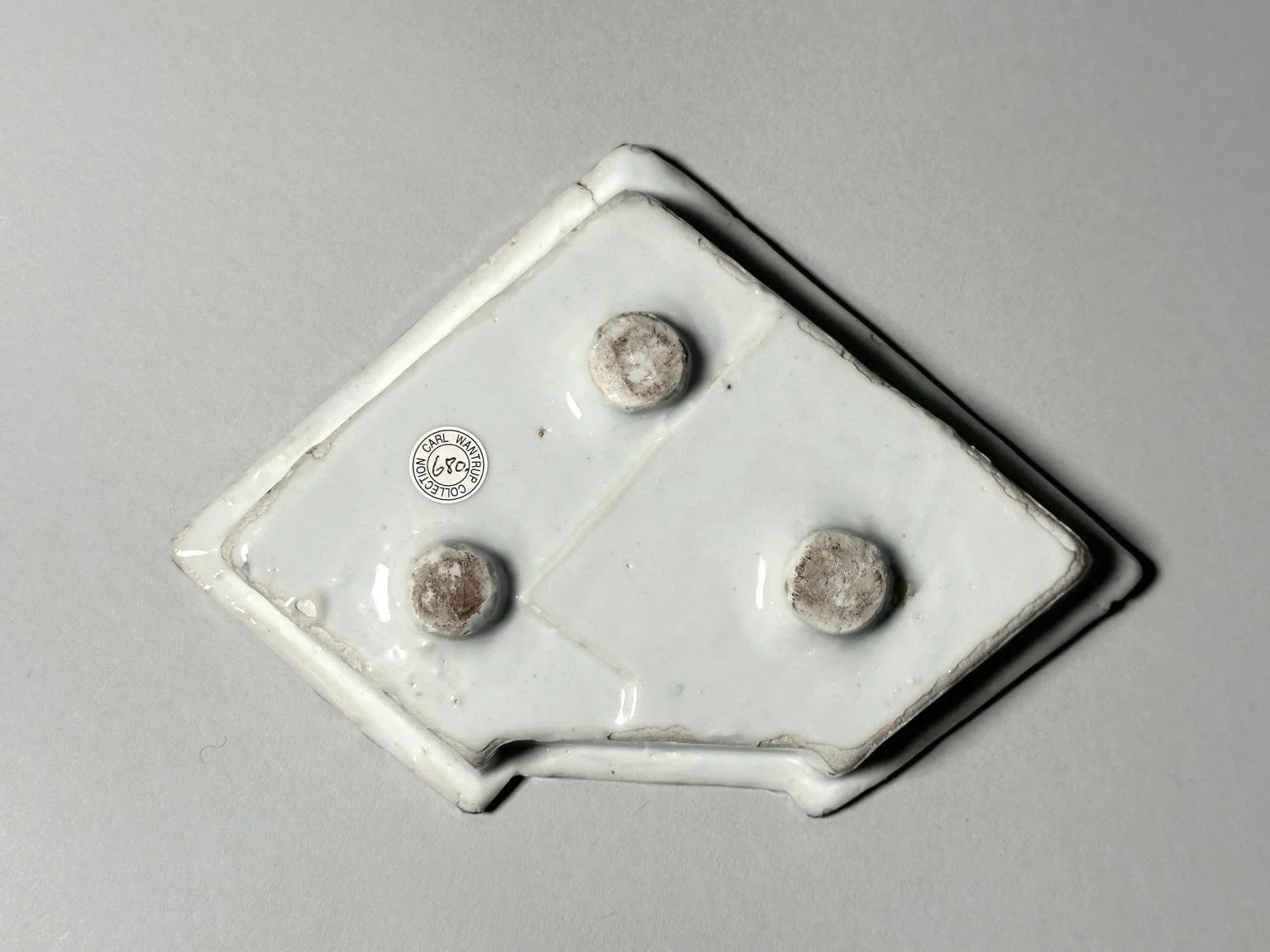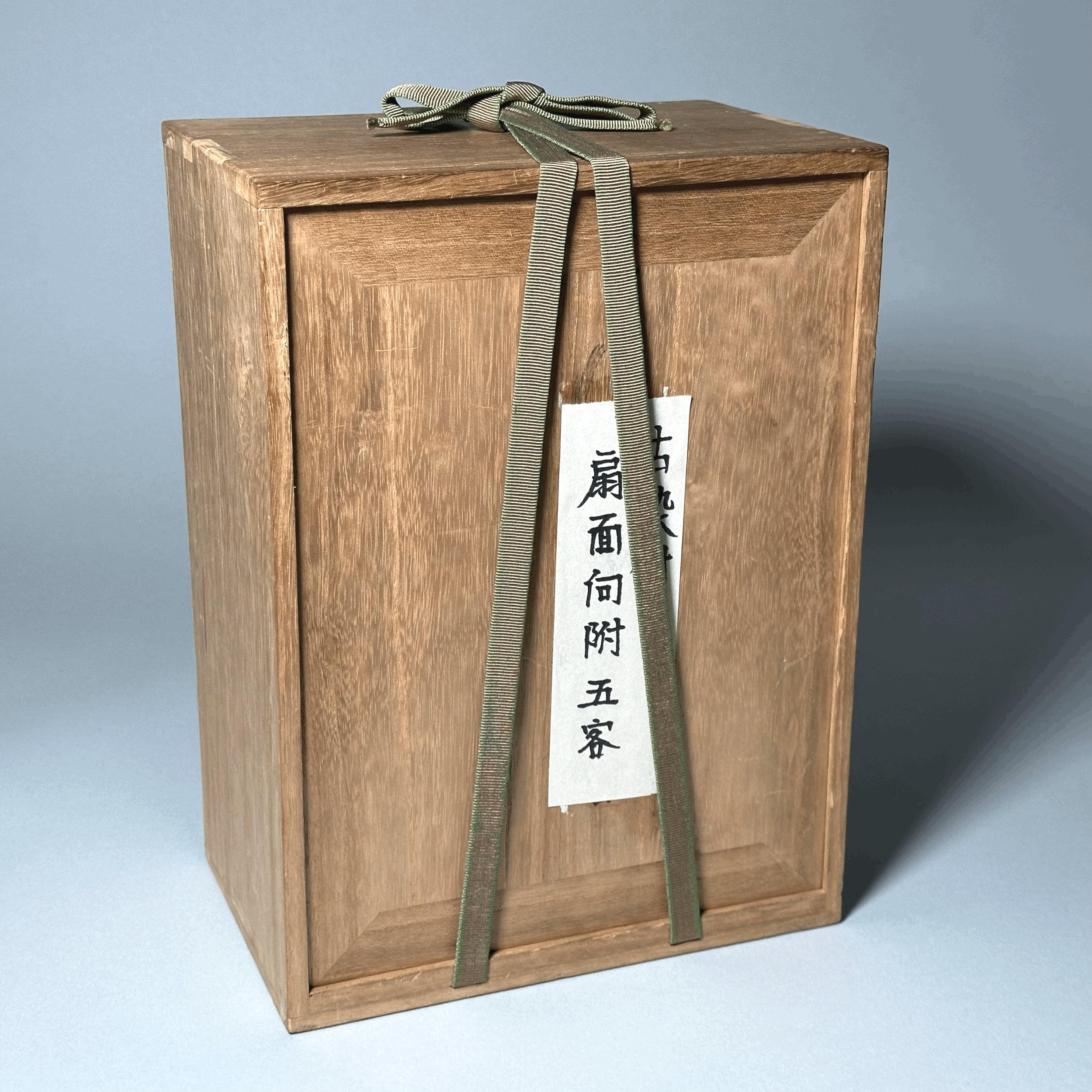 Image 1 of 4
Image 1 of 4

 Image 2 of 4
Image 2 of 4

 Image 3 of 4
Image 3 of 4

 Image 4 of 4
Image 4 of 4





14. Set of five origata (folded paper shape) mukozuke
Jingdezhen, China
Ming Dynasty, Tianqi Period (1620-1627)
Each thickly moulded in the form of a folded paper knot (in the manner of a folded message written on paper for a lover) with three squat feet, the interior decorated with waterscape scenes with figures on promontories in the foreground and mountains in the background. Each approximately 3.7cm high, 19.5cm wide. One dish with old kintsugi repairs. Together with a Japanese wooden box. Cat. 680
For a set of dishes of the same design (possibly from the same original set) see Kosometsuke: Monochrome Section, Masahiko Kawahara, Kyoto Shoin Co., Ltd., 1977, p. 204 / pl. 760.
Note: This shape is derived from a form used in Oribe-type ceramic mukozuke from the Momoyama Period. This manner of folding a piece of paper was used in the Edo Period when giving a note to a lover.
Condition report (carefully viewed under UV, strong light and magnification): fritting to the rims and edges of each dish, and one dish with a small open firing crack to the right of the upper point (production/firing flaws). The dish with the small firing crack also has a small shallow chip to the rim at the upper point. One other dish with a broken section to the upper part of the rim which has an old kintsugi repair.
Jingdezhen, China
Ming Dynasty, Tianqi Period (1620-1627)
Each thickly moulded in the form of a folded paper knot (in the manner of a folded message written on paper for a lover) with three squat feet, the interior decorated with waterscape scenes with figures on promontories in the foreground and mountains in the background. Each approximately 3.7cm high, 19.5cm wide. One dish with old kintsugi repairs. Together with a Japanese wooden box. Cat. 680
For a set of dishes of the same design (possibly from the same original set) see Kosometsuke: Monochrome Section, Masahiko Kawahara, Kyoto Shoin Co., Ltd., 1977, p. 204 / pl. 760.
Note: This shape is derived from a form used in Oribe-type ceramic mukozuke from the Momoyama Period. This manner of folding a piece of paper was used in the Edo Period when giving a note to a lover.
Condition report (carefully viewed under UV, strong light and magnification): fritting to the rims and edges of each dish, and one dish with a small open firing crack to the right of the upper point (production/firing flaws). The dish with the small firing crack also has a small shallow chip to the rim at the upper point. One other dish with a broken section to the upper part of the rim which has an old kintsugi repair.
